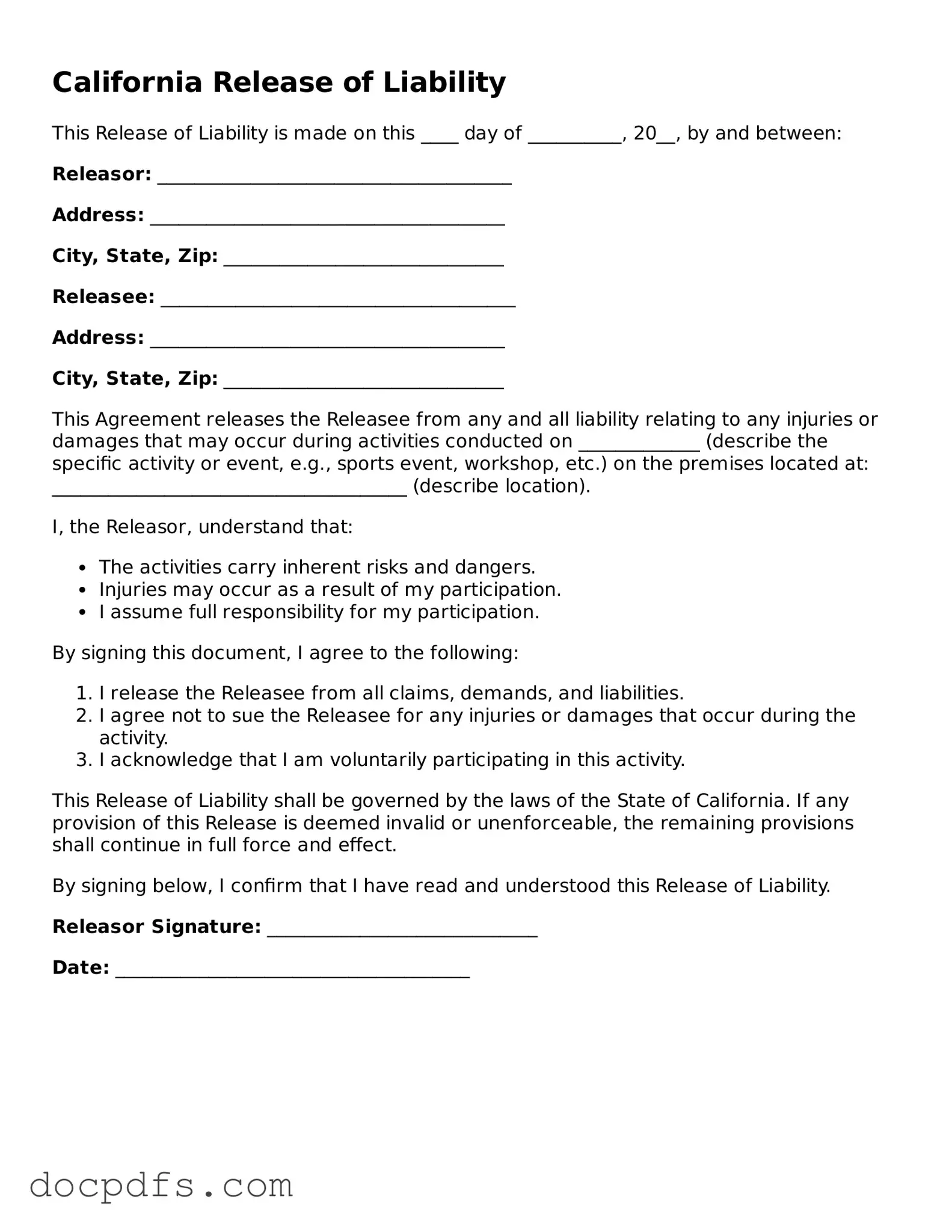A California Release of Liability form is a legal document that protects an individual or organization from being held liable for injuries or damages that occur during a specific activity. By signing this form, participants acknowledge the risks involved and agree not to hold the provider responsible for any accidents or injuries that may happen.
This form is commonly used in situations involving physical activities, such as sports events, recreational activities, or any event where participants may be exposed to risks. It is advisable to use this form whenever there is a chance of injury or damage to property.
Typically, all participants in the activity should sign the form. If the participants are minors, a parent or legal guardian must sign on their behalf. This ensures that all parties understand the risks and agree to the terms of liability release.
Yes, a properly executed Release of Liability form can be legally binding in California. However, its enforceability may depend on various factors, including the clarity of the language used, the nature of the activity, and whether the form was signed voluntarily. Courts may scrutinize these forms to ensure they are fair and reasonable.
Essential elements of a Release of Liability form should include:
-
The names of the parties involved.
-
A description of the activity and associated risks.
-
A statement indicating that the participant understands the risks.
-
A clause releasing the provider from liability.
-
The signature of the participant or guardian, along with the date.
While signing a Release of Liability form generally limits your ability to sue for injuries related to the activity, there are exceptions. If negligence or willful misconduct can be proven, the release may not protect the provider from legal action. It’s important to understand the scope of the release before signing.
To ensure the validity of the form, consider the following steps:
-
Use clear and straightforward language.
-
Make sure it is signed voluntarily without coercion.
-
Provide adequate time for participants to read and understand the document.
-
Consult with a legal professional to review the form.
Generally, once a Release of Liability form is signed, it cannot be revoked unless there is a mutual agreement between the parties or specific circumstances that allow for revocation under California law. It is advisable to consult with a legal professional if you believe revocation is necessary.
California law does not have a specific statute governing Release of Liability forms; however, general contract law principles apply. Additionally, certain activities, such as those involving inherent risks (like skydiving or scuba diving), may have specific regulations that affect the enforceability of these releases.
If participants do not sign a Release of Liability form, the provider may be exposed to greater liability in the event of an injury or accident. It is advisable to require all participants to sign the form to protect against potential legal claims.
